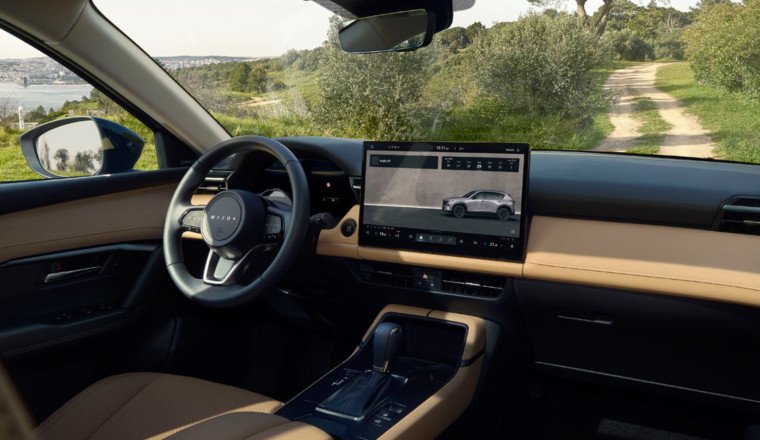
For the past several years, Mazda has remained the sole mainstream holdout in the broader industry push toward touch-based infotainment systems, relying instead on a now-anachronistic, console-mounted dial. It wasn’t bad to use, and it leaned heavily into Mazda’s “hands on the wheel, eyes on the road” safety philosophy. But after a generation of development as the only major outlier in the industry, the company is now pivoting to a conventional, touchscreen-style experience—and axing most of its physical controls in the process.
“It’s all new,” Mazda’s Stefan Meisterfeld, U.S. VP of operations, told The Drive in a one-on-one interview.
And not just “new,” but a ground-up redesign, Mazda said, and not just a re-skin of its existing operating system, and even that is underselling it somewhat.
“[It] will be powered by Google built-in technology. So we have Google Maps natively integrated, we have access to the Google Play Store. The Google Assistant will enhance the voice control. And that’s very important for us because despite this large touch screen, we continue to believe in our safety philosophy, hands on the wheel, eyes on the road,” Meisterfeld said.
The first car to embrace this strategy is the company’s redesigned CX-5, which is the best-selling model in its lineup by far. The CX-5 and its close sibling, the CX-50, comprise more than 50% of Mazda’s total volume—all in just one segment. Put another way, there’s a lot riding on this redesign, and Mazda knows it.
But it’s not just the navigation and other digital features that are moving behind the touchscreen interface with this generation; Mazda swept the dashboard of most of its knobs and switches, including the controls for the audio and climate control systems. Both are now found in the central, 15.6-inch screen.
And according to Meisterfeld, this is what customers were asking for.
“We conducted customer research and we have been working on this for quite a while because we really want it to be intuitive, easy to use, easy to operate, and at the same time, as I mentioned, we want to adhere to our safety philosophy,” he said. “But yeah, customer feedback has definitely been a part of the decision making process.”
But since Mazda was late to adopt the touchscreen, it may already be positioning itself somewhat behind the 8-Ball. As we’ve heard from others in the business, customers love to look at their touchscreens, but they’re not nearly as enthusiastic about how they work. Some, including Hyundai, are even predicting an industry-wide retreat from glass interfaces in the near future.
To hedge against this, Mazda redesigned the CX-5’s steering wheel.
“We have also developed an all new steering wheel layout with physical buttons where you can quite intuitively control most of the critical functions while driving so that you can keep your hands on the wheel and eyes on the road, which as I mentioned, is really critical to our safety philosophy,” Meisterfeld told us.
He said further details about the new wheel controls would be revealed closer to launch, but from what we’re hearing so far, it sounds like we’ll be seeing more than just a simple collection of redundant shortcuts.
“We believe that now with the integration of Google Assistant, which is very critical with the voice command and this newly designed steering wheel, that we can offer this together with this large touchscreen so that we don’t have the situation where people want to control parts of the vehicle and are not focused on the road,” Meisterfeld said.
It’s Mazda’s hope that this integration of different technologies will strike a balance between satisfying customers’ interests in the latest tech and preserving occupant safety. It’s a big swing at a strange time; we’ll see if Mazda connects.
Got a news tip? Send it our way at tips@thedrive.com.
Byron is a contributing writer and auto reviewer with a keen eye for infrastructure, sales and regulatory stories.















Facebook Conversations